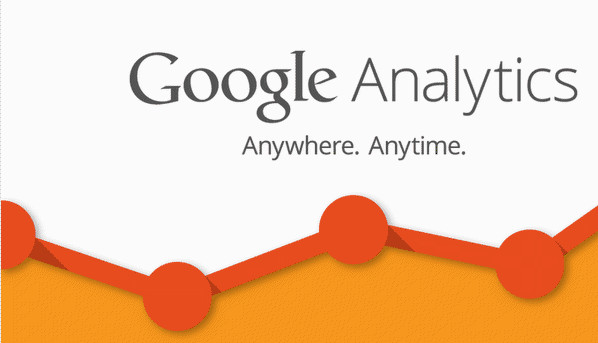The Value of 'Secondary Dimensions' in Google Analytics: Thorough Analysis
Wiki Article
Translating the Value of Additional Measurement in Google Analytics: All Regarding Its Value and Impact
In the world of electronic analytics, the usage of second measurements within Google Analytics offers as a pivotal device for discerning deeper layers of information insights. The relevance of additional dimensions hinges on their ability to offer a nuanced view of user behavior and communication with a website or platform. By dissecting information past surface-level metrics, organizations can open a wealth of details that refines and shapes tactical choices advertising and marketing efforts. This exploration into the world of second measurements not only provides an extensive understanding of user interaction yet likewise clarifies the complex dynamics that drive on the internet efficiency.Comprehending Secondary Dimensions in Google Analytics
The understanding of additional dimensions in Google Analytics is crucial for obtaining much deeper understandings right into customer behavior and website efficiency. While key measurements provide fundamental data points such as web traffic sources and page sights, secondary measurements enable a more nuanced analysis by providing added context to these primary metrics. By including secondary dimensions, individuals can sector and filter their information to reveal patterns and patterns that might not be instantly evident.
Unveiling the Benefits of Additional Measurements
Structure upon the foundational understanding of secondary measurements in Google Analytics, discovering the advantages they provide reveals indispensable insights for enhancing data analysis and decision-making. By including secondary measurements, customers can delve deeper right into their data, gaining a more detailed sight of customer actions, content performance, and other essential metrics.Furthermore, second measurements supply context to primary information, supplying additional layers of info that can help in recognizing user communications and choices. This boosted understanding can guide tactical decision-making, resulting in more targeted advertising and marketing campaigns, internet site optimizations, and overall enhanced efficiency. Fundamentally, secondary measurements work as a powerful tool for unlocking deeper insights and optimizing the utility of Google Analytics for services and internet site owners.
Leveraging Additional Measurements for Improved Insights
By utilizing the power of second dimensions in Google Analytics, businesses can reveal deeper understandings that drive informed decision-making and calculated optimization initiatives. Leveraging additional measurements permits companies to dig past surface-level information and gain a much more thorough understanding of individual actions, target market demographics, website traffic sources, and internet site efficiency. For instance, by incorporating main measurements like web traffic resources with secondary measurements such as geographic area or gadget group, companies can recognize which areas or gadgets are driving the most useful traffic to their internet site.Furthermore, second dimensions allow companies a knockout post to sector and analyze information better, aiding them recognize trends, patterns, and possibilities that may have or else gone unnoticed. By utilizing second measurements, services can tailor their marketing strategies, content, and customer experience to far better meet the requirements and preferences of their target market. In significance, leveraging second measurements in Google Analytics encourages services to make data-driven choices that lead to enhanced efficiency, enhanced ROI, and lasting growth.

Effect of Secondary Dimensions on Data Analysis
Enhancing information evaluation through the use of additional measurements in Google Analytics offers companies with a deeper understanding of their online efficiency metrics. By incorporating secondary dimensions, such as time of day, geographic location, or device category, businesses can uncover important understandings that might have been neglected with main measurements alone. This enhanced degree of granularity permits more accurate division of data, enabling businesses to determine patterns, fads, and correlations that can drive critical decision-making.
Making The Most Of Potential: Secondary Dimensions Approaches
The calculated utilization of additional measurements in Google Analytics prolongs past improving information click for more info analysis; it includes crafting targeted methods to unlock the complete capacity of important insights for organization development. By employing additional dimensions efficiently, businesses can dive much deeper right into their internet site traffic, user actions, and marketing projects to remove actionable understandings. One key approach is to integrate secondary measurements with primary dimensions to get a thorough view of user communications. For instance, pairing the key measurement of 'source/medium' with additional dimensions like 'touchdown page' or 'tool classification' can expose which channels are driving traffic to specific web pages or exactly how user behavior differs across tools.Moreover, using secondary dimensions to segment information based upon user demographics, actions, or innovation can help services customize their advertising and marketing initiatives to details audience segments. This targeted approach can cause improved conversion rates, improved customer experiences, and ultimately, raised ROI. By making best use of the potential of additional dimensions in Google Analytics, businesses can make informed decisions, maximize their online existence, and drive lasting growth.
Conclusion
In verdict, additional dimensions in Google Analytics play a vital duty in giving much deeper understandings and improving information evaluation. Including second measurements into data evaluation methods can lead to even more enlightened decision-making and boosted overall performance.While key measurements give fundamental data factors such as traffic sources and web page sights, second dimensions enable for a much more nuanced analysis by supplying extra context to these primary metrics. By combining key dimensions like website traffic resources with additional measurements such as geographic location or tool category, businesses can recognize which devices or areas are driving the most important traffic to their site.
Learn More By integrating secondary dimensions, such as time of day, geographical place, or gadget group, businesses can reveal useful insights that may have been ignored with main measurements alone. One crucial strategy is to combine secondary measurements with main measurements to obtain a comprehensive view of customer communications. Coupling the key measurement of 'source/medium' with additional measurements like 'touchdown page' or 'gadget classification' can disclose which channels are driving traffic to specific web pages or exactly how individual habits varies throughout devices.
Report this wiki page